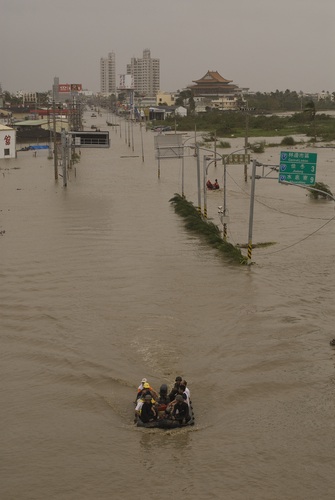The Philippine islands are preparing for yet another storm as Typhoon Lupit heads towards the region. The storm is packing winds of 109 miles per hour and is expected to hit the northern islands Thursday.
This is bad timing for the Philippines.
On September 26, the area was hit with Typhoon Ketsana, which killed almost 500 and injuring more than 600. And just one week later, on October 3, Typhoon Parma struck the Philippines causing $250 million in damage and killing close to 400.
Now, the government is moving fast to prevent even more deaths by evacuating residents from mudslide-prone areas.
The previous two storms were blamed for the destruction of the homes of more than 7 million.
President Gloria Macapagal Arroyo has blamed extreme weather caused by climate change but her critics say the calamity was magnified by poor city planning and millions of squatters living along riverbanks and blocking waterways with their shanties. The urban poor, sources of cheap labor and votes during elections, make up for almost half of Manila’s 12 million people.
buy zestril online dentalhacks.com/wp-content/uploads/2023/10/jpg/zestril.html no prescription pharmacy
Typhoon Fengshen struck the area in June of 2008, killing 1,400 and making it the third deadliest catastrophe of that year. If Typhoon Lupit does in fact strike the Philippines with the strength it currently has, 2009 is likely to turn out to be one of the deadliest and costliest years in Philippines history.


